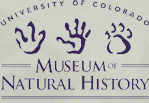 |
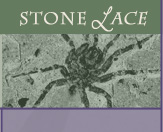 |
||
Page 6 To view larger versions of the images below, click on a thumbnail image or the specimen name. The larger version will display in a new browser window. Use the page number links below the images to go to the next page or return to a previous page.  Pinus sp Common Name: Pine Cone (UCM #34189). Pine trees have both "male" reproductive parts, which contain pollen, and "female" reproductive cones, which develop into seeds. This is a "female cone" of an unknown species of pine. Notice the peduncle, or stem, that is still attached to the bottom of the cone. This is where the cone would have attached to the tree branch. From the dense texture of the cone we might infer that this cone fell from the tree before it was fully developed. Cones have individual scales that open with maturity to allow its seeds to be fertilized. Pinus sp Common Name: Pine Cone (UCM #34189). Pine trees have both "male" reproductive parts, which contain pollen, and "female" reproductive cones, which develop into seeds. This is a "female cone" of an unknown species of pine. Notice the peduncle, or stem, that is still attached to the bottom of the cone. This is where the cone would have attached to the tree branch. From the dense texture of the cone we might infer that this cone fell from the tree before it was fully developed. Cones have individual scales that open with maturity to allow its seeds to be fertilized.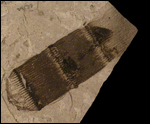 Equisetum florissantense, Common Name: Horsetail or Scouring Rush (UCM #8619). Equisetum is a plant that grows in or near water. It contains small particles of silica within its cells, making it a natural abrasive that humans have used to scrub pots, pans, and even to file finger nails. Horsetails have also been used by herbalists and Native American tribes in the past as analgesics to relieve headache, muscle and joint pain. Paleozoic relatives of the fossil you see here could grow to be over 100 feet tall. Equisetum florissantense, Common Name: Horsetail or Scouring Rush (UCM #8619). Equisetum is a plant that grows in or near water. It contains small particles of silica within its cells, making it a natural abrasive that humans have used to scrub pots, pans, and even to file finger nails. Horsetails have also been used by herbalists and Native American tribes in the past as analgesics to relieve headache, muscle and joint pain. Paleozoic relatives of the fossil you see here could grow to be over 100 feet tall. Pinus florissanti, Common Name: Pine Tree (needles) (UCM # 18458). Different varieties of pines can be identified by the size, shape and number of needles in a bunch. This particular genus of pine has three needles per bunch, making it a variety of Yellow Pine. We know from additional, related fossils of this same species that this pine is most closely related to the modern Ponderosa Pine. Pinus florissanti, Common Name: Pine Tree (needles) (UCM # 18458). Different varieties of pines can be identified by the size, shape and number of needles in a bunch. This particular genus of pine has three needles per bunch, making it a variety of Yellow Pine. We know from additional, related fossils of this same species that this pine is most closely related to the modern Ponderosa Pine.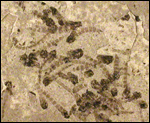 Chironomidae pupae (aggregation), Common Name: Midges (UCM #33796). Developing from eggs laid in the water, these insects matured through their larval stage to become pupae. The pupae floated to the water's surface, where they normally would have completed their metamorphosis into winged adults. This process usually takes only one day. This group of pupae was probably pushed by the wind to the shoreline of the lake, where they were buried before they could complete their metamorphosis. Chironomidae pupae (aggregation), Common Name: Midges (UCM #33796). Developing from eggs laid in the water, these insects matured through their larval stage to become pupae. The pupae floated to the water's surface, where they normally would have completed their metamorphosis into winged adults. This process usually takes only one day. This group of pupae was probably pushed by the wind to the shoreline of the lake, where they were buried before they could complete their metamorphosis.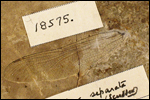 Basiaeschna separata, Common Name: Dragonfly (UCM #18575). Dragonfly adults are excellent predators. They create a little catch-basket with their limbs to capture other flying insects. They can often be seen patrolling the shorelines of lakes, busily hunting for prey, defending their territories or looking for mates. Basiaeschna separata, Common Name: Dragonfly (UCM #18575). Dragonfly adults are excellent predators. They create a little catch-basket with their limbs to capture other flying insects. They can often be seen patrolling the shorelines of lakes, busily hunting for prey, defending their territories or looking for mates. |

|
||
|
|
|||
|
|||
